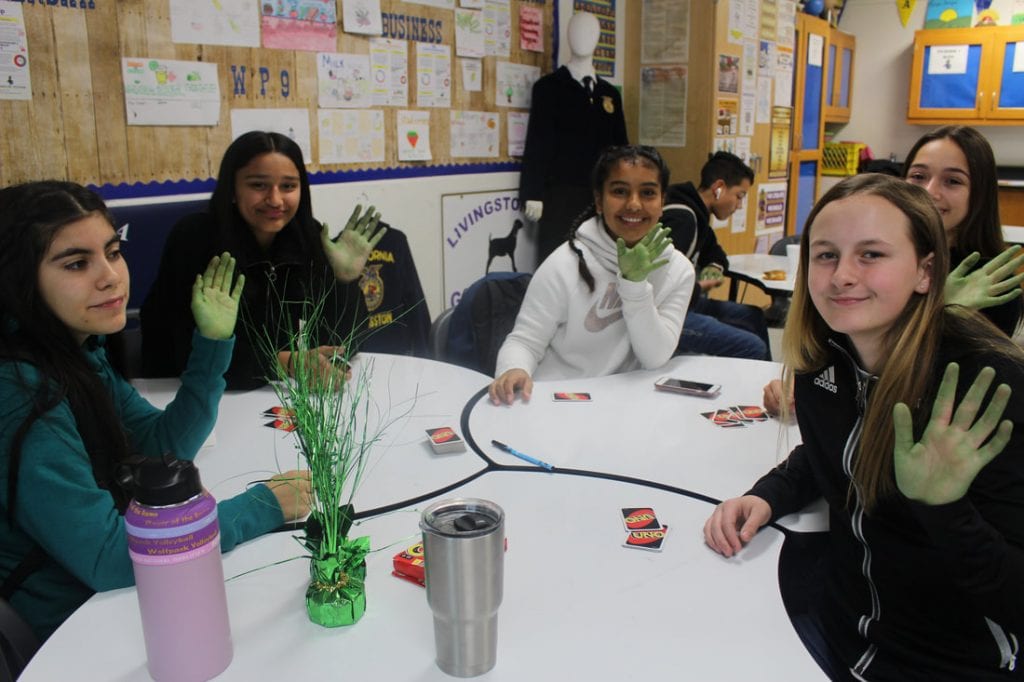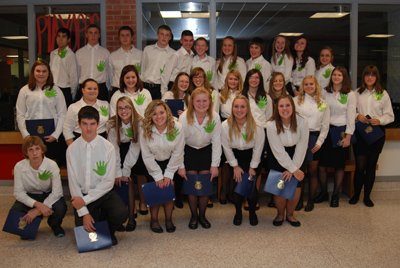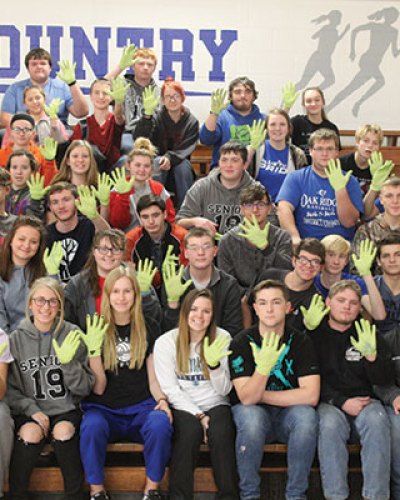Perhaps it is because of the stay-at-home order, but it seems to me the Clint Eastwood movie “The Good, the Bad, and the Ugly” is on television nearly every day. As I reflect back on the FFA, that title might also be fitting for certain aspects of the FFA. We have done many good things in the FFA, and there have been some bad things (especially as it relates to equality and inclusiveness), and there have been some things I would classify as ugly. A news item this week brought back some long forgotten ugly FFA memories.
The news items that caught my attention this week had to do with the University of Kentucky and hazing. The New York Times headline (May 18, 2020) was “Coaches of Storied Cheerleading Team Fired After Hazing Scandal.” To make a long story short, the entire coaching staff for the UK cheerleading program was fired on Monday for engaging in hazing rituals plus other improprieties. I thought hazing was a thing of the past.
At one time hazing was somewhat normal in the FFA. As a freshman agriculture student in 1961, I was introduced to hazing. After the first FFA meeting, my fellow freshmen and I, were escorted to the school parking lot where there were two rows of upperclassmen facing each other about three feet apart. They had their belts in hand. We had to run between the two rows while the upperclassmen swung their belts at us. Was this beltline a positive, welcoming introduction to the FFA? You decide!
Over the history of the FFA there have been many variations of induction activities for the Greenhands. Some were good, some were bad, and some were ugly.
In the 1934 book Fun and Work for Future Farmers there is an entire chapter on “Initiations.” The book’s author was L. L. Scranton, State FFA Advisor for North Dakota. The first paragraph of the Initiations chapter reads (p. 39):
The chapter ceremony for initiating Green Hands and for raising them to the degree of Future Farmers should be put on according to the ritual set up in the Official F. F. A. Manual with the greatest possible dignity and impressiveness. This is an important step in the experience of the young student, and it is very important that his first opinions of the organization, as to its ideals and purposes, are wholesome and inspiring…. During the initiation ceremony itself, no “horseplay” nor “foolishness” should be permitted.
Scranton then addresses the practice of hazing (1934, p.40):
It seems to be taken for granted in many organizations that a prospective member and candidate for initiation must “prove his worthiness” by “riding the goat” and otherwise submitting to being made the “butt” of harmless pranks and practical jokes for the entertainment of the already “elect.” A very limited amount of harmless fun and horseplay to try out the good nature and adaptability of the candidates may be permissible if properly controlled and kept within due bounds. Such activities, if any, should be such as can be thoroughly enjoyed by everyone, including the victim, in a clean and wholesome manner, without causing unwarranted embarrassment or any possibility of undesirable aſter effects. By no means should such activities be allowed to enter into the initiation ceremony proper, nor in any way detract from its dignity and impressiveness.
Scranton indicated this type of hazing should be “very limited”, “harmless” and be “clean and wholesome.” FFA chapters have conducted a variety of activities associated with inducting Greenhands into the chapter. Let’s take a trip back to the 1930s to see what some FFA chapters were doing back then. All of the examples below are from Scranton’s book.
The Clarinda, Iowa FFA chapter in 1933 garbed the Greenhands with red bandana handkerchiefs, straw hats, with “F. F.A.” printed on them, blue shirts worn backwards, blue overalls, old shoes without laces and were instructed to promptly answer “Farmer” when an old member slapped them on the back.
The Chrisman, Illinois FFA chapter in 1933 had prospective Greenhands fill out an application form to be a member, pledge to support the chapter, and then take a comprehensive exam about the FFA. If the student passed the exam, he was eligible to be initiated as a Greenhand.
In 1933 The Dungannon, Virginia FFA chapter required this – “Each student in the first year wore a sign on his back saying, “I am a candidate for the F. F. A. Chapter”. Besides this, each boy carried a farm implement, such as a shovel, hammer, rake, etc., and their faces were smirched with green chalk. They wore their coat turned wrong side out and a pants’ leg rolled up.”
The Neponset, Illinois FFA chapter was invited to help initiate the Greenhands into the Wethersfield Chapter (Kewanee) (Scranton, 1934, p. 43):
The initiation took place on February 5, 1934, at the Wethersfield high school. The eighteen “Green Hands” were led through an old depleted farm to show the results of poor farm practices. They were then led back to the chapter room by two conductors, where each officer enlightened the candidates more about F. F. A. work. Refreshments consisting of ice cream, cookies and apples were then served by the Wethersfield Chapter. Each of the Neponset boys was introduced to the Wethersfield boys and many new acquaintances were made. The boys talked together concerning the things each was doing in his respective department. Meetings such as this increase interest in F. F. A. and at the same time boys of different chapters become better acquainted.
The Jeffersonville, Ohio FFA chapter in 1934 “…required [Greenhands] to wear their overalls, shirt and tie backwards for three days at school and learn the Future Farmers Creed. They were also required to get up in front of the study hall one day after dinner and show their ability at calling hogs. One year the Green Hands were required to wear corn cob necklaces for one week at school.”
In 1934 the Dixon, Illinois chapter conducted initiation in the school shop (Scranton, 1934, p. 42):
The candidates were led by the two conductors to the old fence lot and were forced to climb over that. Next came the old mud walk that led to the tool shed. Here the tools were strewn about the floor and the boys were forced to walk over them. Upon leaving the tool shed they encountered another mud walk, and an old gate that would not open. This led to the barn where the animals were loose. Various members imitated the animals. Then came the old smoke house where every member bumped his head on some meat. Last, but not least, came the handshake of friendship. This was a small generator, which was turned by hand, and every Green Hand held hands and received a shock. It is a very interesting ceremony for both the Green Hands and the older students.
These are examples of Greenhand Initiation activities from the 1930s. I am not suggesting you emulate any of them but some of the younger members of the profession may not be aware that these types of activities were once very common in the FFA. And these are the ones of which we have records. No telling how many bad or ugly initiations have existed over time. I am aware of the beltline I survived and know of a colleague who, along with the other Greenhands, had to sit through an entire chapter meeting with an egg in their mouth.
Some FFA chapters took hazing too far. The delegates at the 14th national FFA Convention in 1941 passed a motion “…that the organization go on record as looking with disfavor on ‘horseplay’ in initiations and hold to the regular initiation ceremonies as given in the manual of the Future Farmers of America.”
The 1950 Policy Manual for Vocational Agriculture in Nebraska High Schools (p. 32) clearly states, “Rough initiations or hazing of any sort must never be tolerated.” This is in reference to the Greenhand ceremony.
Lloyd Phipps, a teacher educator at the University of Illinois, wrote an article titled “F.F.A. Hazing” in the May 1952 issue of The Agricultural Education Magazine. After describing the impressiveness of the American Farmer degree ceremony, Phipps states (1952, p. 252) “Unfortunately some FFA chapters violate the dignity, impressiveness, and importance of the awarding of degrees by promoting hazing activities, especially at the Green Hand Degree level.” Phipps continues:
Hazing is a sign of immaturity in an organization. It is a barbaric practice which indicates the immaturity or insecurity of the members. It may also indicate a lack of proper guidance by an advisor and by parents. Hazing is especially dangerous at the Green Hand Degree level. Most of the boys becoming Green Hands are first year pupils in high school, and successful adjustment to high school is difficult at best.
Phipps tells about the mental strain that may be inflicted on the initiates (P. 252):
In one instance a boy on his way to the ceremony for his Green Hand Degree, which included an informal initiation ceremony, broke under the strain and detoured to the local railroad station and took a train out of town. He was located several days later in a town hundreds of miles from his home.
Phipps also tells about boys who have suffered broken arms or legs during hazing activities. Phipps identified other detrimental effects of hazing:
- The teacher could be dismissed
- The teacher does not obtain an otherwise deserved raise.
- It discourages talented agricultural students from joining the FFA
- In planning the chapter program of work students who have endured hazing focus on coming up with new hazing activities instead of developing a balanced program of work.
Phipps concludes his article by identifying factors that contributed to the practice of hazing, describes how to curtail hazing, and recommends getting rid of hazing.
In The FFA and You (Bender, Clark & Taylor, 1962, p. 393-394) we find “Since the FFA is an educational organization dedicated to the development of agricultural leadership, citizenship, and cooperation among its members, horseplay has no part in its initiation activities…Rowdiness and mistreatment of members are not only harmful to those applying for the degree but also to the whole chapter in the sense that such conduct detracts from your chapter’s standing in the school and community.”
The current practice of some FFA chapters of having Greenhands wear a carboard green hand on their clothing goes way back. In the November, 1933 West Virginia publication titled “Vocational Education” it is suggested that the chapter “make a dozen Green Hands from sheet metal, solder a safety pin to the back of each —dip in green Duco—hang up to dry, and keep in a box for each initiation.”
Some of the current FFA induction activities include painting of hands green, designing a greenhand t-shirt, wearing a cardboard green hand on clothing, participating in team agriculture activities, interacting with the chapter leadership, having an Ag SWAG event, conducting a Greenhand initiation breakfast and having students make green handprints on a wall or poster. I am sure there are many more and most are positive.
 Figure 1. Livingston, CA members with their green hands.
Figure 1. Livingston, CA members with their green hands.

Figure 2: Bellevue. OH Greenhand members

Figure 3. The Greenhand Wall at Pea Ridge High School in Arkansas.
 Figure 4. Oak Ridge, MO Greenhands
Figure 4. Oak Ridge, MO Greenhands
Concluding Remarks
Many FFA chapters today have some type of “induction” activity for new members. It might be appropriate to reexamine these activities to make sure they contribute to the aims and purposes of the FFA. As you plan for the next school year you might want to question if your induction activities could be classified as the good, the bad, or the ugly.
References
Bender, R., Clark, R. & Taylor, R. (1962). The FFA and You. The Interstate Printers and Publishers, Inc. Danville, IL.
Phipps, L. (1952, May). F.F.A. Hazing. The Agricultural Education Magazine. Volume 24, Issue 11.
Scranton, L. L. (1934). Fun and Work for Future Farmers. The Interstate Printing Company, Danville, IL.
